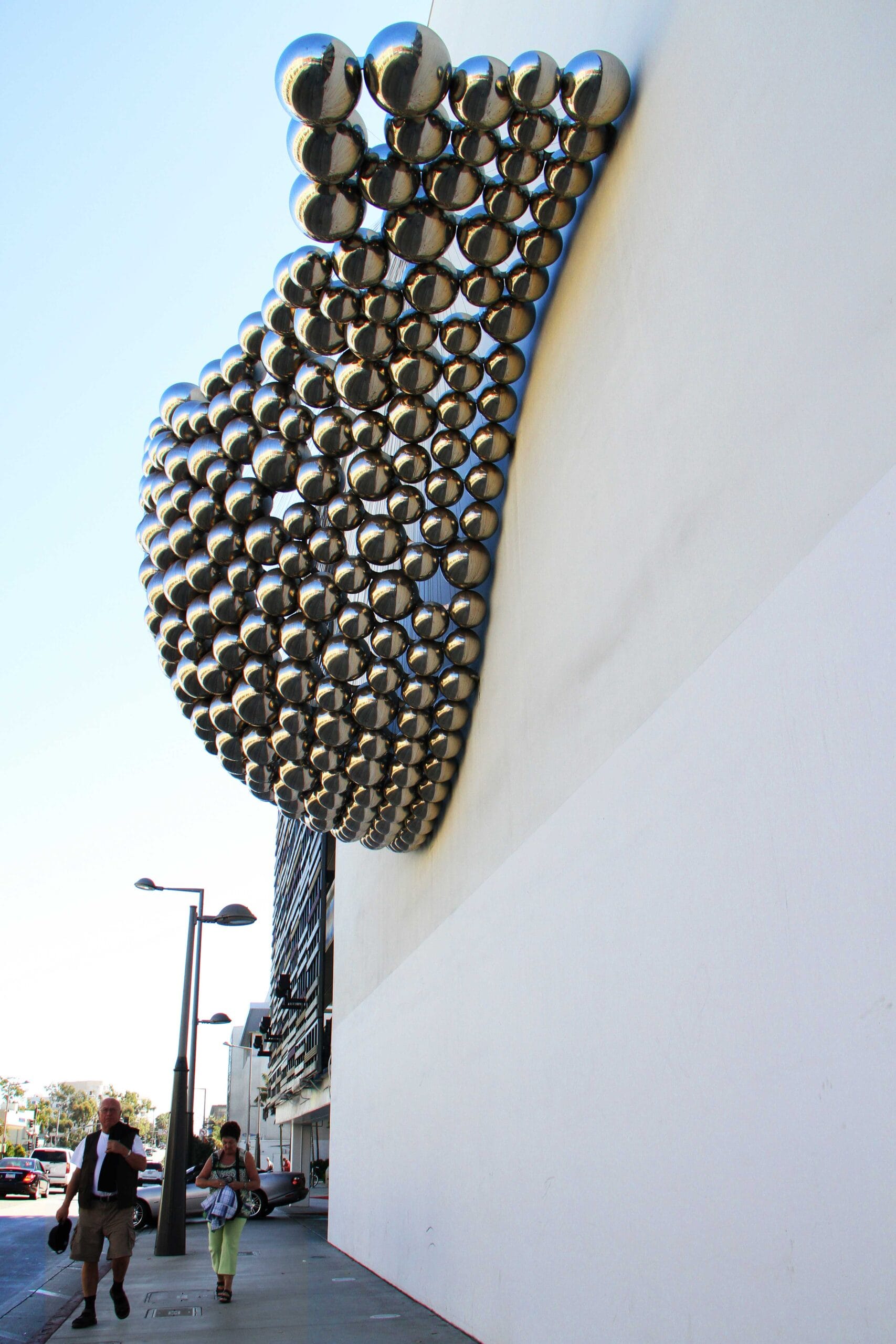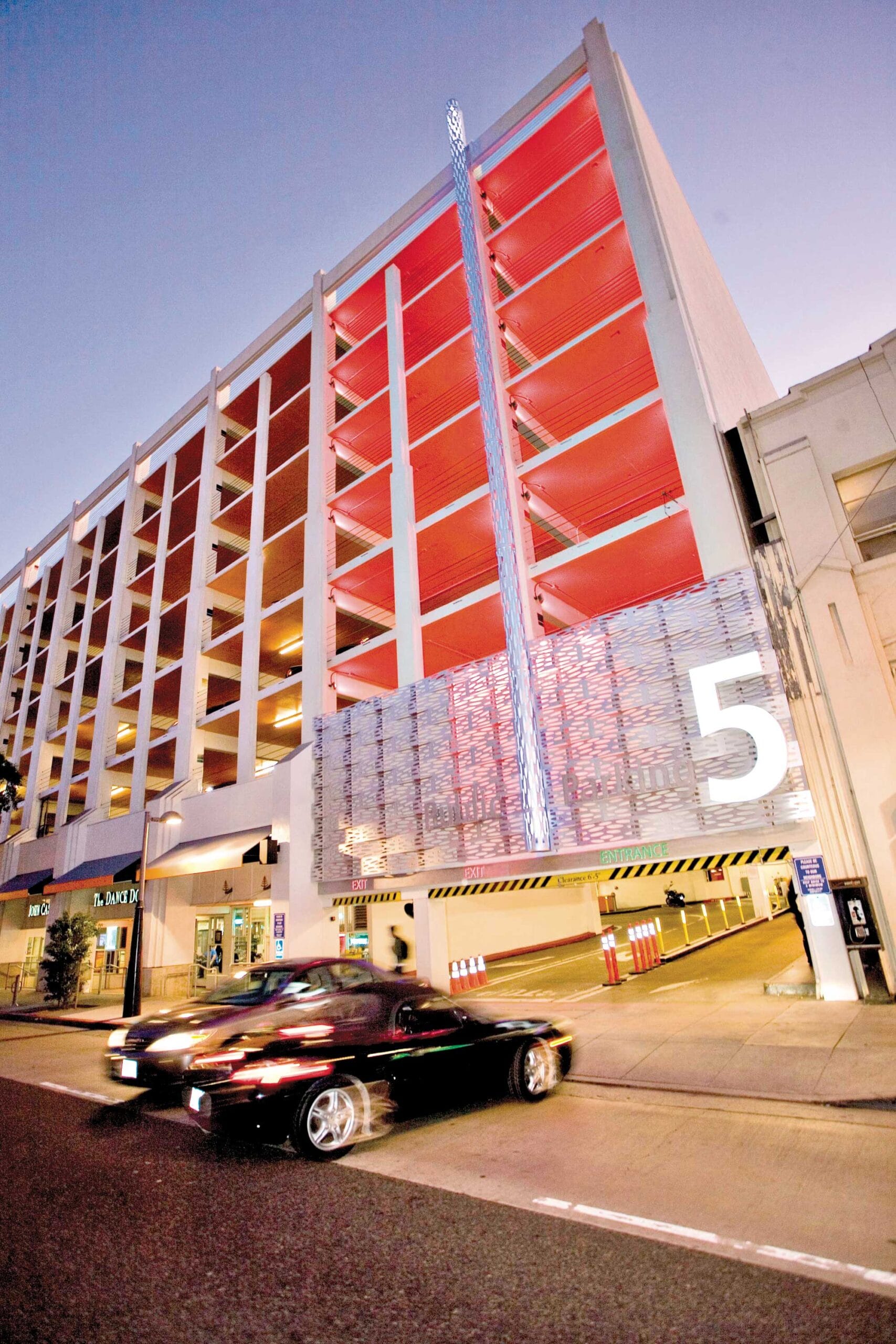CITYWIDE — With only three months left to finance the restoration of Santa Monica's iconic anti-nuclear sculpture before a City Hall-imposed deadline, supporters of "Chain Reaction" are far from reaching their $400,000 fundraising goal, sources say.

"They've secured a little over $30,000 to date," said City Hall Cultural Affairs Manager Jessica Cusick, who gave a project status update to the Santa Monica Arts Commission last week. Even with City Council's pledge to match up to $50,000 in public donations, less than 20 percent of the required funds have been raised in over a year.
"Chain Reaction," the 1991 work of Pulitzer Prize-winning cartoonist Paul Conrad, has been a source of public contention since the council first debated its structural integrity in March 2012 on the recommendation of engineers who alleged the state of its fiberglass exterior and internal support system posed public safety concerns.
Although the cost of the necessary repairs has been estimated to be anywhere between $90,000 and $420,000, the community must raise $400,000 by Feb. 1, 2014, in order to ensure that "Chain Reaction" stays nestled between the Santa Monica Courthouse and Civic Center on Main Street. Should the funds not be secured by that deadline, the fate of the 26-foot-tall mushroom cloud will be left to the council and Landmarks Commission.
"My sincere hope is that … we are able to raise enough money, we're able to get the cost down to a realistic figure and we're able to meet right at the middle," said Dave Conrad, son and artist representative of Paul Conrad. "I feel we're on the right schedule, but there's a part of me that says, ‘Woah, that's not much time.'"
Though "Chain Reaction" is now officially considered a city landmark, the controversy surrounding the work has put public art at center stage of public discussion in Santa Monica.
Along with Fourth Street's metallic-sphered "Cradle" and Colorado Avenue's "Wheels" mural, "Chain Reaction" was one of the city's most celebrated pieces of public art. City Hall designates 52 of these permanent installations as part of its citywide public arts collection, though not all works are so large and attention-grabbing.
"One of the things people don't know or understand is that public art can take a lot of expressions," Cusick said.

Oft-overlooked are pieces that are incorporated into the architectural designs of city structures. The colored light columns and rippling facade panels of the Downtown parking structures are examples, as is "Light Overhead," the sculptural lighting gateway that rests beneath the Santa Monica Freeway on Pico Boulevard.
Those who use Colorado Avenue in Downtown may have noticed the 200-foot long programmable glass art wall situated along the perimeter of the Big Blue Bus headquarters, which contains special translucent panels that change colors and patterns to simulate movement. The wall helps provide privacy for the expanded bus yard, and also incorporates a bus stop at one end.
"Works become a component of the urban fabric," Cusick said. "We in Santa Monica pioneered that approach for a number of years … back in the ‘80s and ‘90s when it was new, so we have a lot of work in our collection, sort of that integrated public art."
The abundance of public art throughout the city is largely due to City Hall's decades-long commitment to providing artists with public funds.
After establishing the Arts Commission to regulate all art-related programs in 1982, City Hall created a citywide "Percent for Art Program" in 1986. Per this measure, 1 percent of the total budget for any City Hall-funded construction project must be dedicated to public art. Additionally, a 2007 council ordinance mandates that private developers either use 2 percent of their construction costs in a similar fashion or donate an amount equal to 1 percent of building costs to the Cultural Arts Trust Fund.
Such initiatives have allowed public art to flourish in Santa Monica throughout the years, and new works continue to pop up on a regular basis. In September, weather vane installation "Weather Field No. 1." of newly opened Tongva Park became the latest piece in the collection.
In addition to the works commissioned by City Hall — which also include portable and temporary pieces like those featured at the Bergamot Station Arts Center and GLOW festival — Santa Monica is home to a large number of privately sponsored public art projects.
For over a year, the grassroots campaign "Beautify Lincoln" has given life to the dreary storefronts of Lincoln Boulevard through civic engagement and the installation of dozens of colorful murals.
"It's changing the neighborhood," said project coordinator Evan Meyer. Along with other community volunteers, Meyer dedicates his spare time and change to the upkeep and beautification of the boulevard.
"My goal is to say, ‘If you have a dirty wall, there's no reason [it] can't be painted to something positive,'" he said.
Before starting a mural, Meyer needs permission from building owners. Few decline his offer to decorate. As it turns out, the eye-catching murals are actually great for business.
"I can't complain," said Bicycle Ambulance owner Newton Barnes, who noted that foot traffic to his store has significantly increased since the completion of a mural on his store's exterior wall. "Before, the shop was in a little corner … it was regular paint. With the mural, now you can see the shop from a good distance."
Show us your favorites
Whether they're public or private sculptures, murals, statues or other works, the Santa Monica Daily Press wants to see your favorite pieces of public art. Snap a picture with you next to your favorite piece (if possible) and send it to editor@www.smdp.com. If we like it, we'll publish it.
editor@www.smdp.com

